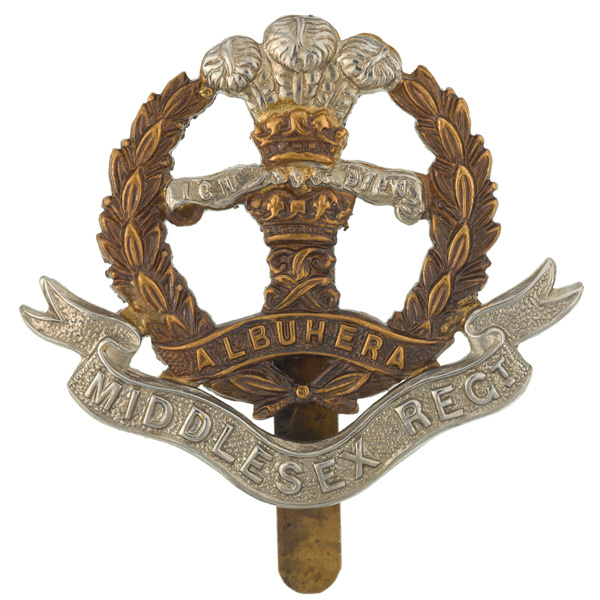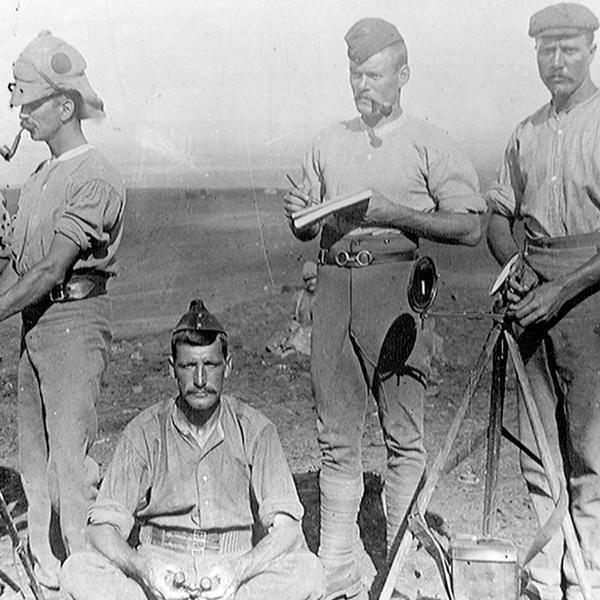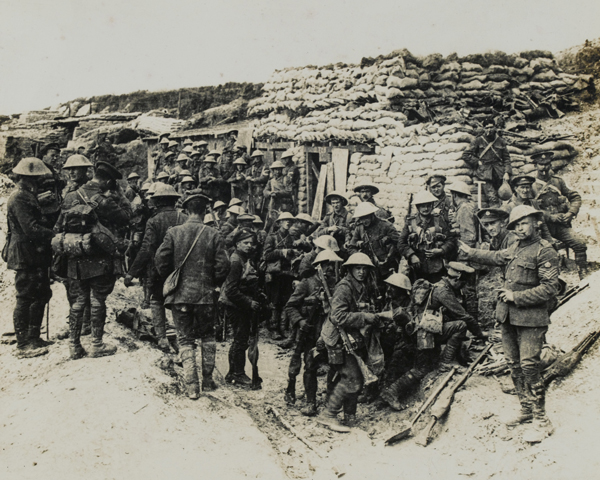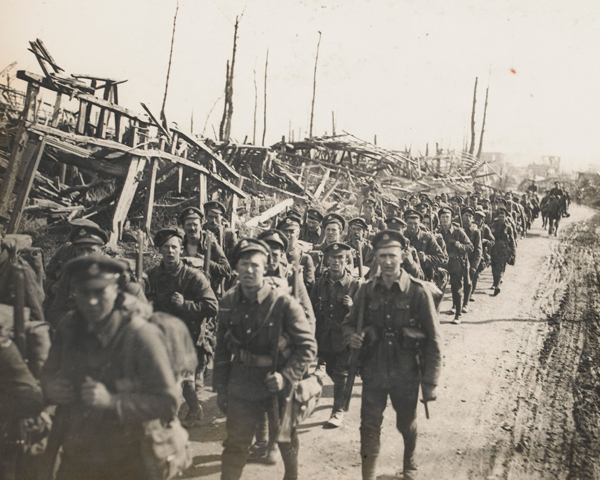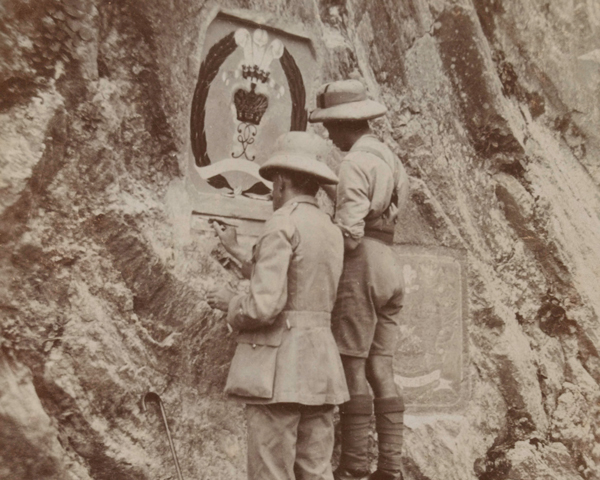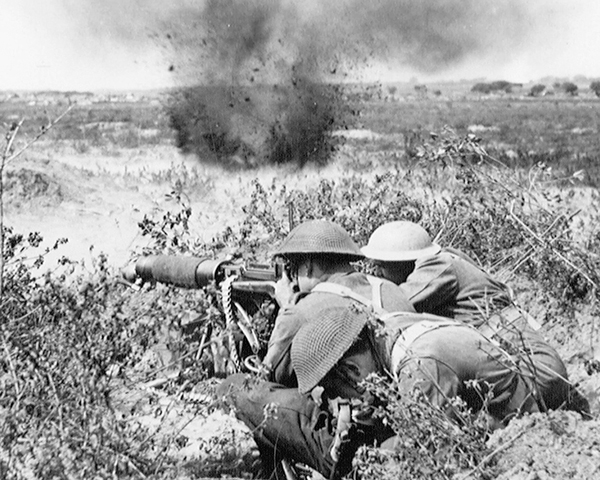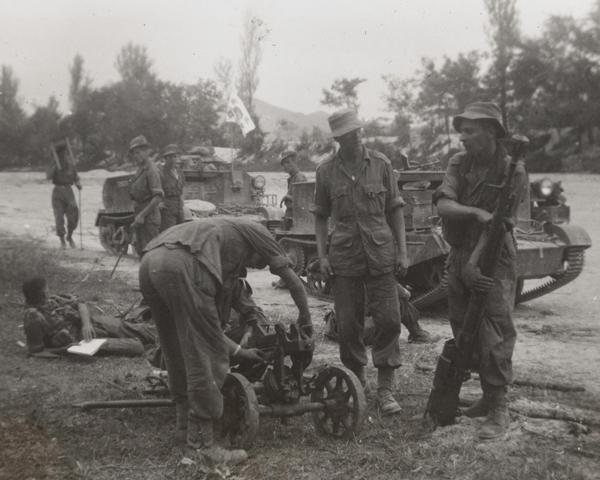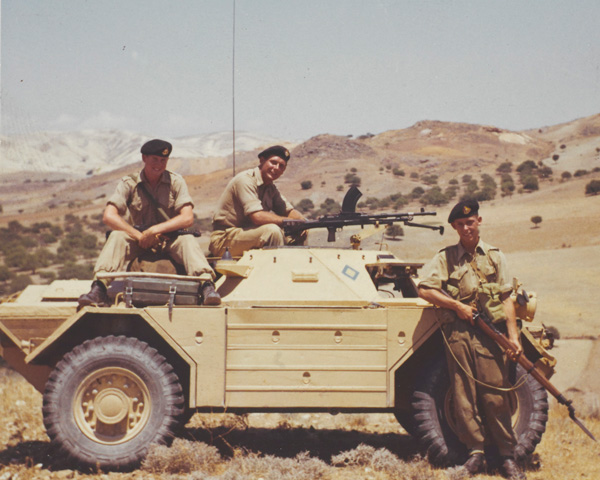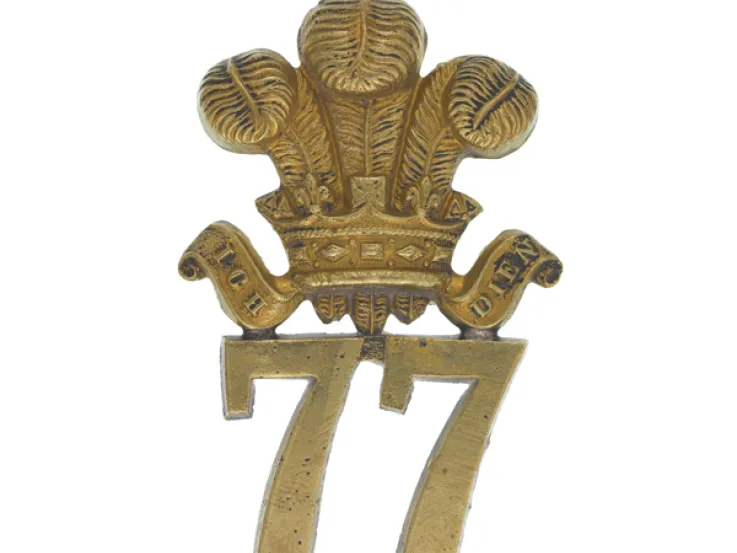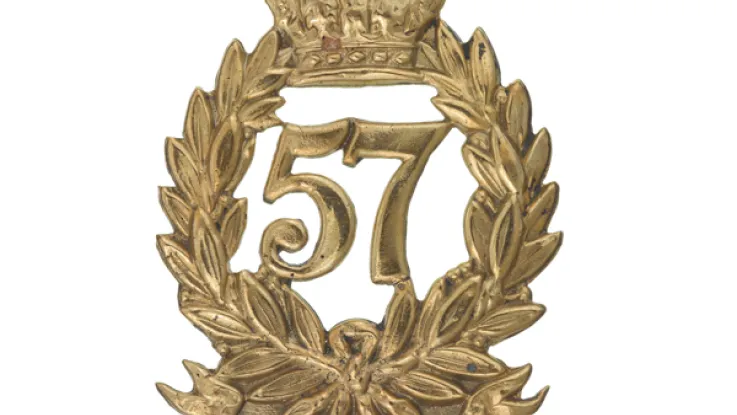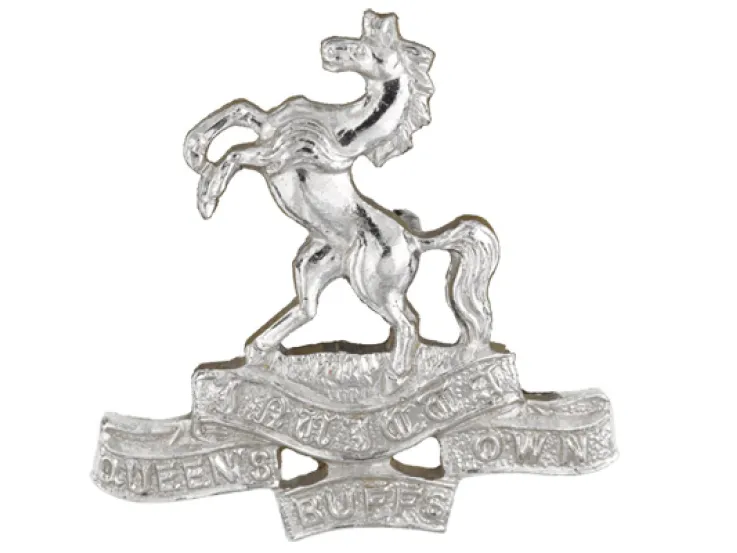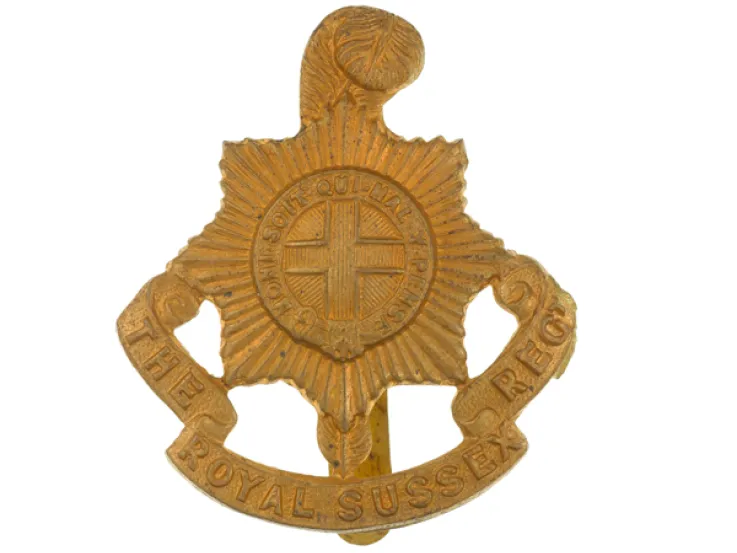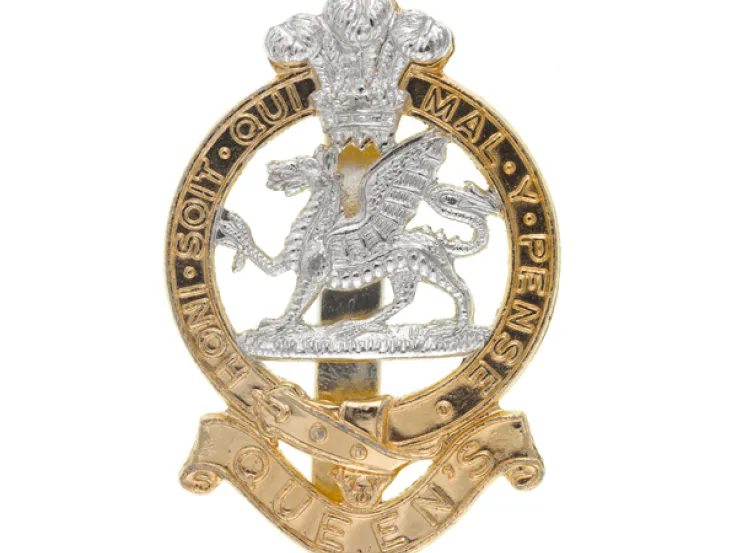Explore more from Regiments and Corps
The Middlesex Regiment (Duke of Cambridge’s Own)
4 minute read
Origins
In 1881, major Army reforms resulted in several units being merged to create new county regiments. One of these was The Duke of Cambridge's Own (Middlesex Regiment), formed by merging the 57th (West Middlesex) Regiment of Foot and the 77th (East Middlesex) Regiment of Foot (The Duke of Cambridge’s Own). As their names indicate, each of these was already affiliated with the historic county of Middlesex.
The 57th became the new unit’s 1st Battalion. In Britain at the time of the merger, its first overseas posting in its new form was Gibraltar in 1892. The 77th was in India when the amalgamation occurred, becoming the new regiment’s 2nd Battalion and only returning to Britain in 1898.
Both battalions subsequently undertook garrison duties across the British Empire, including in India, Malta and Aden. 2nd Battalion also served during the Boer War (1899-1902). Two more regular battalions, the 3rd and 4th, were formed in 1900. These served on the Atlantic island of St Helena, as well as in South Africa and Ireland.
First World War
The regiment's four regular battalions all served on the Western Front during the First World War (1914-18), with 3rd Battalion also deploying to Salonika in 1915.
An additional 16 Territorial, 18 New Army and four works battalions were raised during the conflict, serving in most of the war's major theatres.
Quiz
In the First World War, which sport were two of the Middlesex Regiment’s ‘Pals Battalions’ associated with?
The 17th and 23rd Battalions of the Middlesex Regiment were formed in 1914 and 1915 respectively, and known as Footballers' Battalions. Players, staff and fans of several clubs, including Clapton Orient (now Leyton Orient) and Tottenham Hotspur, all joined up together.
Inter-war period
The 1st, 3rd and 4th Battalions all spent time occupying Germany early in the inter-war period. In 1922, 3rd and 4th Battalions were disbanded, but the original two regular battalions proceeded to undertake garrison duties in many locations including Egypt, Palestine, Shanghai, India and Singapore.
In 1937, both of these were converted to machine-gun battalions. That same year, 1st Battalion moved to Hong Kong, where it was captured by the Japanese in December 1941. Also in 1937, the Territorial Princess Louise’s Kensington Regiment moved from the London Regiment to the Middlesex Regiment.
Second World War
2nd Battalion was in Britain at the outbreak of the Second World War in 1939. It deployed straight to France with the British Expeditionary Force to provide ‘Corps Troops’ for reinforcing hard-pressed units. It was then evacuated in June 1940 and remained in Britain for four years re-equipping and re-training.
The regiment’s territorial battalions had raised duplicates on the outbreak of war. One of these, 2/8th Battalion, was renamed 1st Battalion in May 1942 to replace the original battalion of that name which had been captured at Hong Kong.
Both the 1st and 2nd Battalions landed in Normandy in June 1944 and fought their way through North West Europe. At the end of the war, 2nd Battalion was sent to Palestine, while 1st Battalion stayed behind in Germany.
Legacy
The two regular battalions were merged in 1948. The regiment then converted back into infantry, moving to Hong Kong once again the following year.
From there, it deployed to Korea for a year in 1950, before joining the British occupation forces in Austria and Germany between 1953 and 1962. However, this was interrupted by a three-year posting to Cyprus from 1955.
In 1966, the regiment merged with The Queen’s Royal Surrey Regiment, The Royal Sussex Regiment and The Queen's Own Buffs, The Royal Kent Regiment to form The Queen's Regiment.
Access the archive
The National Army Museum holds the archive collection for the Middlesex Regiment. For more information about this collection, please contact the Templer Study Centre.


